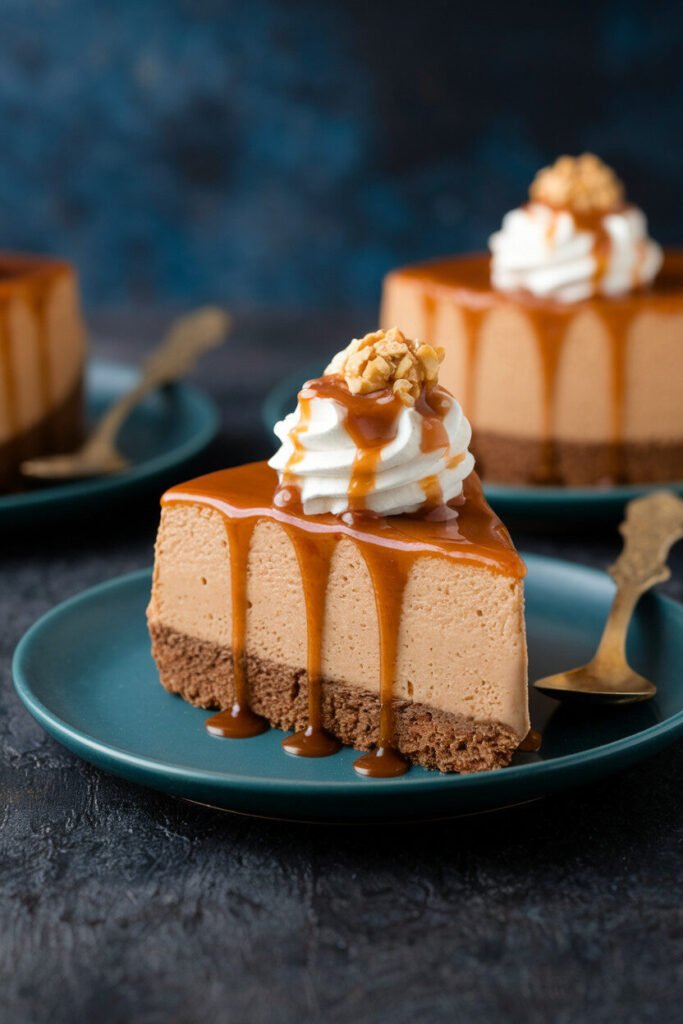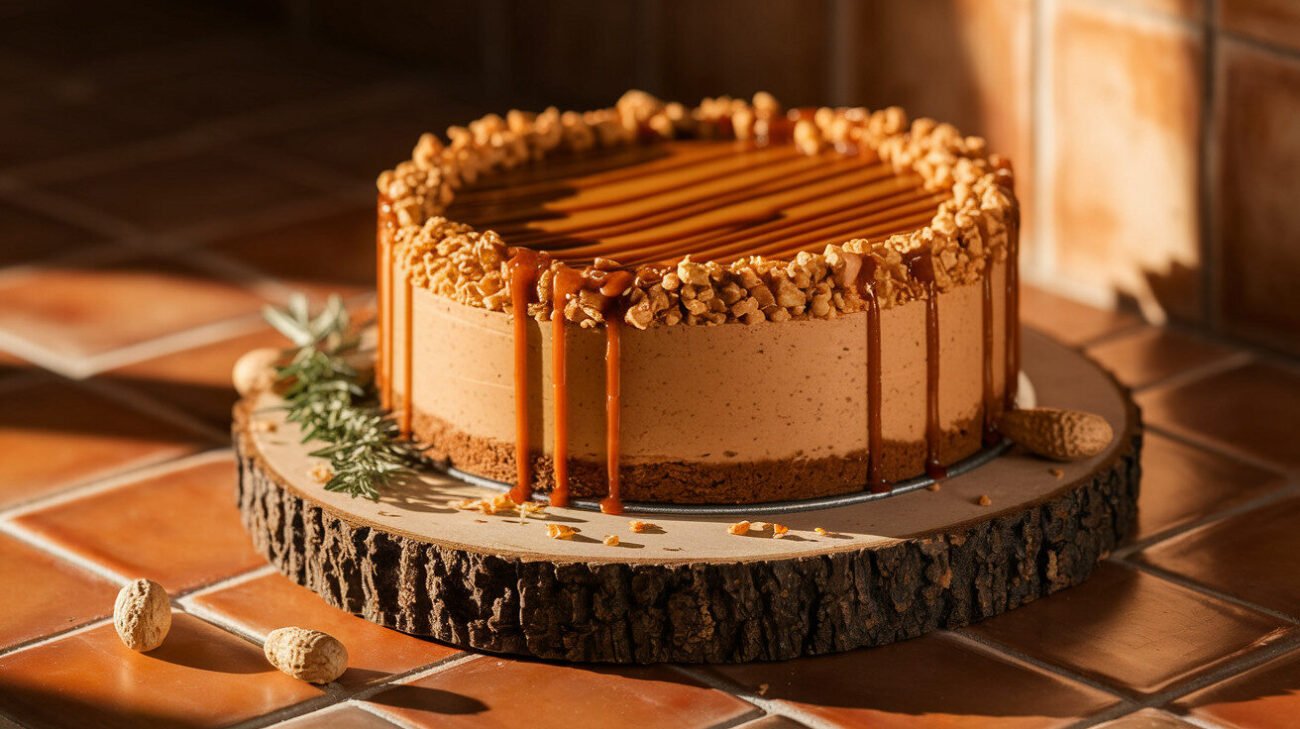Most keto cheesecakes are… fine. They’re passable. But they often have a gritty texture from the sweeteners, a crust that falls apart, or a flavor profile that just screams “diet food.” This keto peanut butter cheesecake is different. It’s structurally sound, luxuriously smooth, and built on principles that address the common failings of low-carb desserts. After developing this for a client who demanded a dessert that could stand up to a traditional one, I landed on a formula that uses ingredient functionality, not just substitution. The salted caramel isn’t an afterthought—it’s a integral component that balances the richness. This is the version I’d serve to anyone, keto or not.
Why This Keto Peanut Butter Cheesecake is Different
The difference lies in a technical approach to the ingredients. Most recipes just tell you to mix things together. This one understands why each component is there and how to manipulate it for a superior outcome. It’s about emulsion, stabilization, and the science of sweetness.
Achieving the Perfect Keto Cheesecake Texture
The texture hurdle in keto baking almost always comes down to the sweetener. Granular erythritol, while great for baking, doesn’t dissolve easily in cold fat. If you just blend it into cream cheese, you get a sandy mouthfeel. The solution? A two-step sweetening process.
First, you’ll use a confectioners-style keto sweetener (like a powdered erythritol/allulose blend) for the bulk of the sweetness. It dissolves instantly. Second, and this is the pro move, you’ll add a tiny amount of a liquid sweetener like monk fruit extract or stevia. This rounds out the flavor and eliminates the cooling effect that erythritol can have, without adding granularity. The goal is a sweet, smooth profile with no off-notes or grit.
The Salted Caramel Swirl Solution
A sugar-free caramel sauce is notoriously difficult. It can seize, become oily, or just taste… wrong. The problem is replicating the Maillard reaction and cooked-sugar complexity without sugar. My solution is a cheat, but it works impeccably: a reduced heavy cream and butter base.
You simmer heavy cream with butter, a keto brown sugar substitute, and a pinch of xanthan gum until it thickens significantly. The reduction creates a deep, cooked dairy flavor that mimics caramelization. The xanthan gum (just a 1/4 teaspoon) prevents separation and gives it a silky, luxurious body that won’t water out into your cheesecake filling. The flaky sea salt sprinkled on top? It’s not just garnish. It provides little bursts of flavor that cut through the fat and make the peanut butter taste more like peanut butter.
Sourcing Your Keto Ingredients for Success
You cannot make a stellar keto dessert with subpar ingredients. The margin for error is smaller than in traditional baking because every component has a very specific job.
Building a No-Bake Nut Crust That Holds
The classic graham cracker crust is out, obviously. A pure almond flour crust can be dense and oily. A pure coconut flour crust is too dry. The secret is a hybrid. I use a 2:1 ratio of super-fine almond flour to raw, unsalted pecans, pulsed together. The almond flour provides the base, while the pecans bring fat and a flakier, more shortbread-like texture that holds its shape when sliced.
The binder is just melted butter and one egg white. The egg white proteins coagulate upon chilling, acting as a powerful edible glue. You must press this crust firmly and evenly into the springform pan. I mean, really lean into it with the bottom of a glass. This compression is what prevents a crumbly first bite.
Selecting the Right Peanut Butter and Sweeteners
This is critical. You must use a commercial, no-stir peanut butter that contains palm oil or other stabilizers. The natural, oily kind that separates will ruin the emulsion of your filling, making it greasy and potentially causing it to break. I know it’s not the “pure” choice, but for structure, it’s non-negotiable. Jif or Skippy’s natural versions are good bets.
For sweeteners, as mentioned, a blend is key. I use a powdered erythritol/allulose blend for its dissolvability and minimal cooling effect. Allulose is particularly magic here because it behaves much more like real sugar in terms of browning and freezing point depression, which gives you a softer, creamier final product straight from the fridge. You can find more specific brand recommendations and other foundational recipes on our Keto Recipes ideas.
Crafting a Truly Keto Salted Caramel
Don’t try to make a dry caramel with keto sweeteners—it won’t work. The method I described earlier is your best bet. Use a “brown” keto sweetener if you can find it; it has molasses flavors added back in, which provides that classic caramel note. The key is slow, patient reduction. You’re not boiling it; you’re simmering it until it coats the back of a spoon. And that pinch of xanthan gum? It’s the difference between a sauce and a syrup. It gives it the oozy, thick quality of real caramel.

The Step-by-Step Assembly Method
Here is the complete recipe with the techniques that guarantee success.
For the Crust:
- 1 ½ cups super-fine almond flour
- ¾ cup raw pecans
- ¼ cup powdered erythritol sweetener
- 5 tablespoons unsalted butter, melted
- 1 large egg white
- Pinch of salt
For the Peanut Butter Filling:
- 24 oz (three 8-oz blocks) full-fat cream cheese, softened
- 1 cup creamy, no-stir peanut butter
- 1 cup powdered erythritol/allulose blend
- 1 teaspoon liquid monk fruit or stevia extract
- 1 tablespoon vanilla extract
- ½ cup heavy cream
- ¼ teaspoon salt
For the Salted Caramel:
- ½ cup heavy cream
- 3 tablespoons unsalted butter
- 3 tablespoons brown keto sweetener
- ¼ teaspoon xanthan gum
- ½ teaspoon vanilla extract
- Flaky sea salt, for garnish
Preparing the Pan and Crust Base
Line the bottom of a 9-inch springform pan with parchment paper. Do not grease the sides. In a food processor, pulse the almond flour and pecans until the pecans are finely ground. Add the sweetener and salt, pulse to combine. Drizzle in the melted butter and egg white and pulse until the mixture resembles wet sand. It should hold together when pinched.
Pour the mixture into the prepared pan and press it down firmly and evenly across the bottom and about halfway up the sides. Use a flat-bottomed glass or measuring cup to really compress it. Freeze for 30 minutes to set.
Creating the Peanut Butter Cheesecake Filling
Using a stand mixer with the paddle attachment or a hand mixer, beat the softened cream cheese and peanut butter on medium speed until completely smooth and no lumps remain. This could take 2-3 minutes. Scrape down the bowl.
With the mixer on low, slowly add the powdered sweetener. Once incorporated, increase the speed to medium and beat for another minute. This helps dissolve the sweetener. Add the liquid sweetener, vanilla extract, and salt. Mix until combined.
Finally, with the mixer on low, stream in the heavy cream. Once the cream is incorporated, turn the mixer to medium-high and beat for 1-2 minutes until the filling is light, fluffy, and holds soft peaks. Do not overmix. Pour the filling into the set crust and smooth the top.
Layering and Swirling the Salted Caramel
While the crust was setting, you should have made the caramel. In a small saucepan over medium heat, combine the ½ cup heavy cream, 3 tablespoons of butter, and 3 tablespoons of brown sweetener. Whisk continuously until the butter melts and the sweetener dissolves. Bring to a gentle simmer and cook for 5-7 minutes, whisking often, until the mixture thickens slightly.
Reduce the heat to low. Sprinkle the ¼ teaspoon of xanthan gum over the surface while whisking vigorously to prevent clumps. Cook for one more minute until noticeably thicker. Remove from heat and stir in the ½ teaspoon of vanilla. Let it cool for 10-15 minutes until it’s still pourable but not hot.
Dollop the slightly cooled caramel over the top of the peanut butter filling. Use a knife or skewer to swirl it gently into the top layer of the filling. Do not over-swirl or you’ll incorporate it completely. Sprinkle the top with flaky sea salt.
Cover the pan with plastic wrap and refrigerate for a minimum of 8 hours, or ideally overnight. This setting time is crucial for the texture and allows the flavors to fully meld.
Frequently Asked Questions
How do I store this keto peanut butter cheesecake?
It must be stored in the refrigerator, covered tightly with plastic wrap or in an airtight container, for up to 5 days. For longer storage, you can freeze it. Slice it first, wrap the slices individually in plastic wrap, and place them in a freezer bag for up to 2 months. Thaw in the refrigerator overnight.
Can I use a different nut butter instead of peanut butter?
Yes, but with caution. Almond butter or cashew butter will work, but they have a higher oil content and are more likely to separate. If you use them, look for the “no-stir” kind and consider reducing the amount of heavy cream in the filling by a tablespoon or two to compensate for the extra fat.
Why is my cheesecake filling too soft?
Two likely causes. First, your cream cheese wasn’t cold enough when you whipped it. It should be softened but still cool to the touch. Second, you may not have whipped it enough to incorporate sufficient air before adding the cream. Finally, it might just need more chilling time. A full 8 hours is essential.
How many net carbs are in a serving?
Based on the specific brands I use, a slice (1/12 of the cheesecake) comes to approximately 5-6 grams of net carbs. The majority comes from the almond flour and peanut butter. Always calculate based on your exact ingredients for precision.
Can I make this dessert dairy-free?
It’s challenging, but possible. For the crust, use coconut oil instead of butter and omit the egg white (it will be more crumbly). For the filling, use a high-fat dairy-free cream cheese and coconut cream instead of heavy cream. The caramel is the hardest part; a blend of coconut cream and coconut butter is your best bet, though the flavor will be different.
Over 500 Delicious Healthy Keto Recipes. From Snacks and Appetizers, to Main Dishes, to Drinks and Desserts. Great recipes for Losing Weight, Improving Your Health, and Staying in the Ketogenic Zone.
Andreas – Keto recipe creator who lost 40lbs and discovered his love for low-carb cooking. 300+ tested recipes | 5 years of keto experience | Real food for real people. No certifications, just results that taste amazing!
